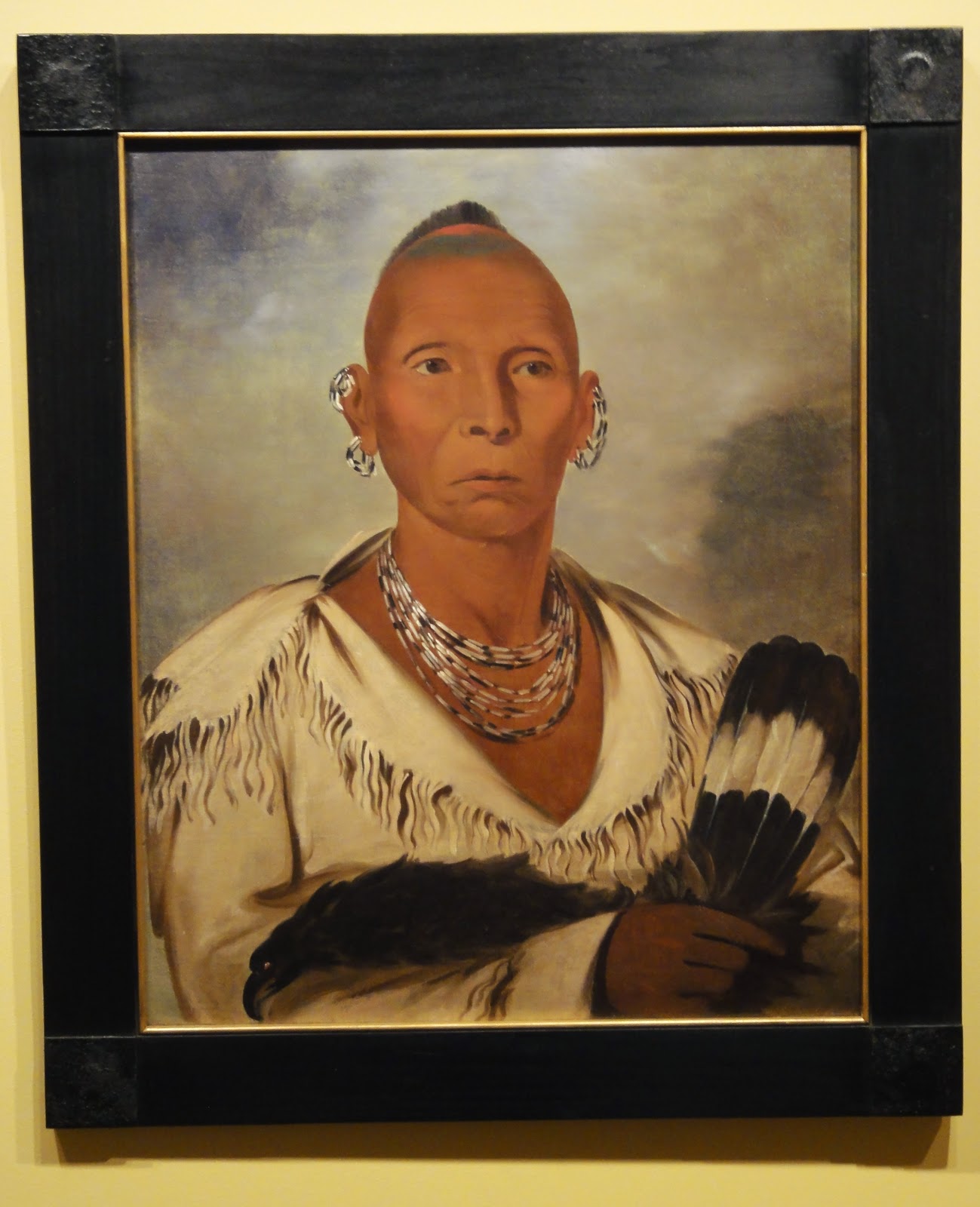The collection is generally organized chronologically, but there are also small thematic special exhibitions. When I was there in January and June there were several first floor galleries devoted to American dance -- including several video loops. Although photography is never allowed in the special exhibitions, I realized this only after taking a photo of this strong, sensuous bronze bust of 'Jose Limon' by Philip Grausman.
 |
| 'Jose Limon' by Philip Grausman, bronze, 1969. Photo by McClure |
 |
| 'Oliver Hazard Perry' by Martin J. Heade in 1855. Photo by McClure |
 |
| 'Andrew Jackson' by Ferdinand Pettrich based on an original from 1836. Photo by McClure |
 |
| 'Black Hawk' by George Catlin, oil on canvas, circa 1835. Photo by McClure |
 |
| 'Daniel Webster' by Francis Alexander, oil on canvas, 1835. Photo by McClure |
 |
| 'Pierre G. T. Beauregard' by George P. A. Healy, oil on canvas, 1861 |
 |
| 'Robert E. Lee' by Edward Caledon Bruce, oil on canvas, circa 1865 |
 |
| 'Julia Ward Howe' by John Elliot and William H. Cotton, oil on canvas, circa 1925. Photo by McClure |
 |
| 'Douglas MacArthur' by Howard Chandler Christie, oil on canvas, 1952 |
 |
| 'George C. Marshall' by Thomas E. Stephens, oil on canvas, circa 1949. Photo by McClure |
 |
| 'Carl Sandberg' by William A. Smith, oil on canvas, 1961. Photo by McClure |
 |
| 'Gertrude Stein' by Jo Davidson, terra cotta, 1923. Photo by McClure |
 |
| 'Self-Portrait with Rita' by Thomas Hart Benton, oil on canvas, 1922. Photo by McClure |
 |
| 'The Recital (Portrait of Denyce Graves)' by Nelson Shanks, oil on canvas, 2000. Photo by McClure |
 |
| 'The Four Justices' by Nelson Shanks, oil on canvas, 2012. Photo by McClure |
No comments:
Post a Comment